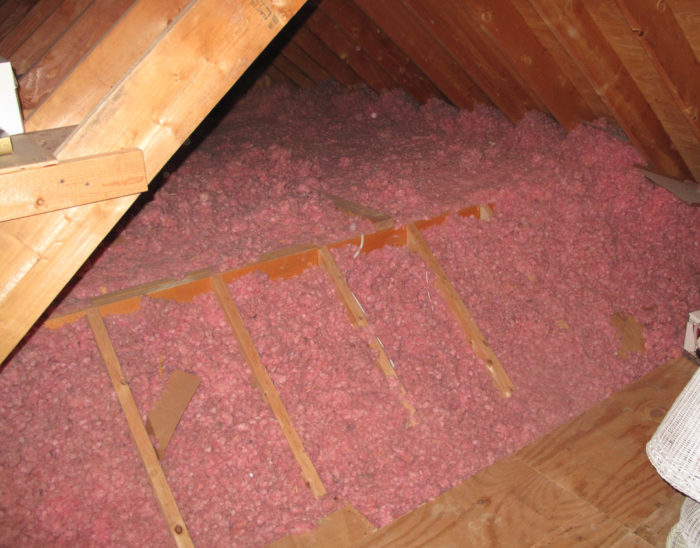
Image Credit: Martin Holladay
I was recently a weekend guest at the house of some friends who live in Climate Zone 5 (a zone which includes Nebraska and Massachusetts). Since I have no interest in embarrassing anyone, I won’t mention any names or the home’s precise location. The story, however, is true.
The weather was hot. The two-story house was built in the 1980s; it included a single-zone split-system air conditioner that delivered cool air through ductwork to every room in the house.
My hosts complained that the second floor was always hot, even when the air conditioner was running full blast. Curious, I poked around a bit. There was an access door to a kneewall area upstairs, and I saw that the house had a crazy, chopped-up roofline with several distinct attic areas. The second floor had varying ceiling heights, and the first floor included a “great room” with a double-height ceiling. Most of the second-floor ceilings were sloping ceilings that followed the roof plane.
Houses with these features have complicated thermal boundaries, and rarely have an uninterrupted air barrier. Snooping around in the attic, I saw blown-in fiberglass installed above horizontal ceilings, blown-in fiberglass installed above sloping ceilings, and fiberglass batts installed in vertical kneewalls. Although the insulation job was neat and the insulation was undisturbed, none of the sloping or vertical insulation was protected by an attic-side air barrier.
What else? The second-floor ceiling was peppered with recessed can lights. And there were two skylights upstairs.
Typical 1980s construction
Needless to say, I wasn’t traveling with a Duct Blaster or a blower door, so I didn’t have a chance to test the home’s duct system or envelope leakage. But anyone familiar with homes built in the 1980s probably has a pretty good idea of what was wrong with this house:…
Weekly Newsletter
Get building science and energy efficiency advice, plus special offers, in your inbox.

This article is only available to GBA Prime Members
Sign up for a free trial and get instant access to this article as well as GBA’s complete library of premium articles and construction details.
Start Free TrialAlready a member? Log in





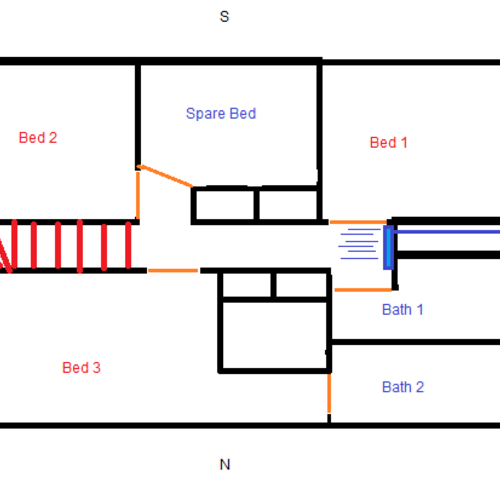
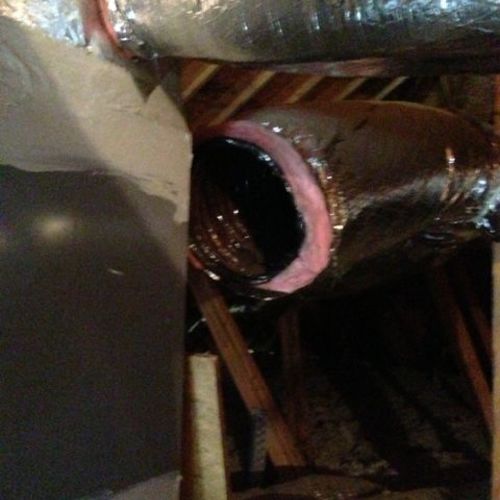
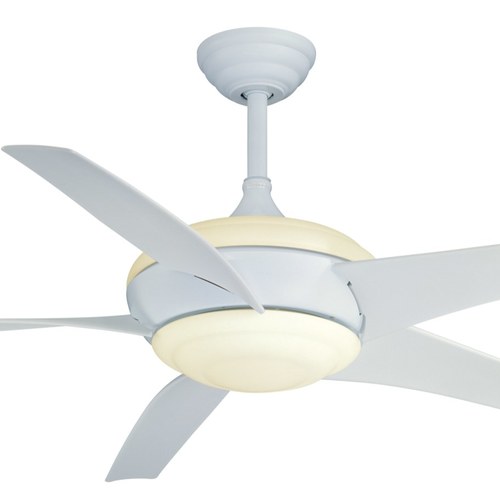
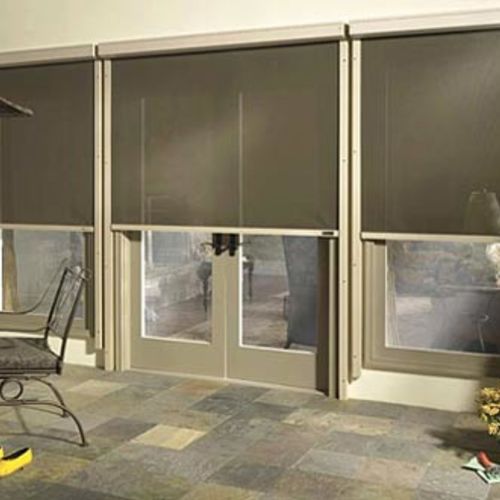






34 Comments
Insulation keeps you warm
Yesterday, on a very hot and humid NH 4th of July, I had the following discussion.
Well Educated Neighbor: My bedroom is too hot for sleeping, even with an air conditioner.
Me: You should get your attic air sealed and add insulation.
WEN: Add insulation? That will just make my room warmer!
Me: (I need a beer.)
air barrier
wouldn't an air barrier on the attic side of the sloped ceiling create an insulation "sandwich". there is only one barrier.
Response to Shane Claflin
Shane,
Although you are worried about creating an air-barrier sandwich, your worries are misplaced. In fact, you want an air-barrier sandwich -- especially if you are insulating with fiberglass batts.
The Energy Star Homes program requires an air-barrier sandwich. For example, see the Energy Star Homes Thermal Bypass Checklist Guide: "The Thermal Bypass Inspection Checklist requires a sealed air-barrier on all six sides of insulation (top, bottom, back, front, left, and right)."
Did anyone mention the "Z"-word?
Zoning.
I contend it is virtually impossible to make a two story home comfortable, summer and winter, without the use of two systems or zoning a single system. My preferred choice, for total loads of 4 tons or less, is zoning a single system.
It is difficult, though not impossible, to zone typical single stage equipment, but virtually ANY solution has to be better than the horror described above - second floor open to outdoors while AC is wailing away on first floor.
I would not include a bypass damper. Instead configure each zone damper's "off" position with enough opening such that a single zone call results in reasonable airflows to the calling zone - 30-50% above design is probably acceptable. (If you've ever witnessed a zoned system's attempt to blow 1300 CFM through the equivalent of three 6x10 registers, you'll have an idea of what is UNreasonable...)
Additional duct adjustments may be necessary...your mileage may vary.
Ha... that's funny...
You need to get out of NE more often Martin. Come to TX and y'all see most new houses built like that... multi-level ceilings and knee walls insulated w/o air barriers. It's a standard feature at no extra charge!
Air barrier on top of blown in attic insulation?
Something I've always wondered about the 6 side thing, how does it apply to attic floor insulation in a vented attic? Here in TX it seems that best practice is to blow in loads of fiberglass or cellulose with soffit baffles (and ridge rents). There's never an air-barrier on top of the blown in, in fact it would be hard to put one there. Is that really problematic?
Response to James Howison
James,
The Energy Star Homes Thermal Bypass Checklist includes several exceptions to the requirement for an air barrier on all six sides of the insulation. One exception is that there is no need for a top-side air barrier for insulation installed on an attic floor.
There are two reasons for this exception:
1. It is awkward and expensive to install plastic housewrap on top of insulation installed on the floor of an attic.
2. It is just as effective (and cheaper) to just blow more cellulose on the attic floor if you are worried about the (slight) performance degradation caused by the lack of a top-side air barrier.
So if you are worried, just blow a little more cellulose to make the insulation deeper than the code requires.
Zoning
I think 6 years ago now, we went with the advice of our A/C contractor and turned our system in to a 2-zone system to deal with summer heat. (He also recommended some crazy form of glue-based sealing, which has worked out well for us).
I sold off the window A/C that was in use by the previous owners and have been happy since. It is somewhat amusing to see how fast the temperature falls from 95 degrees to 72 when there are only two bedrooms and a bathroom upstairs, and a full A/C system directed through 4 vents.
At this point we're looking for a cost-effective solution to air leakage for a house built in '69. The one A-rated contractor we talked to was just going to blow $600 of insulation on top of what we had... which didn't seem like the best solution... but I have to get rid of some existing insulation to get rid of mold, so we'll see.
Listening to what Manual J tells you
What I seldom hear discussed, is the heating needs for a given room are often not the same as cooling needs, expressed as a percentage of the total. If they are not, any single (forced air) duct system will give the right airflow for summer peak, or winter, but not both. You can see this most clearly using Manual J numbers. In addition to all the craftsmanship issues talked about, the very design of the house may be the root cause of the problem.
I have seen this in my own house, after several years of educating myself and pondering, realized that I need Different Airflow for a particular room to be equally comfortable in winter. If you look at the attached Manual J report, you will see the bedroom labeled "Teresa's" requires 7.3% of the system total at winter design temperature, but 6.7% at summer design temperature. Unless I can add about 10% more airflow each winter season, this predicts a comfort problem which is not fixable by the simpler methods described in this blog.
A designer *could* employ a Manual J model, see a first set of numbers, measure the extent of any problem, and then add features to the design for the explicit purpose of arriving at the same *percentage* of heating as for cooling. Surely there are sophisticated enough designers who have the tools to do that, but it seems highly exotic from a homeowner's viewpoint. Yet the problem is all too common.
Is this not a simple statement of mathematics? And if so, how could anyone argue with this?
Thank you.
SOP for that situation
Is to design the duct system to accommodate the larger of the two seasonal design air flow requirements. The delta between 6.7 and 7.3 % is so minor that it should have little impact on the performance of the room.
Unless and until we deploy room-by-room zoning, there will always be some local deviations from zone setpoint. The idea is to design and deploy a system to hold these deviations to acceptable minimums.
Beware GIGO - garbage in produces garbage out. Very minor changes to fenestration coefficients, incorrect delta-Ts across system, or internal gains will throw off an individual room's performance. Chasing an 0.6% fraction of a system's total output (on the order of 10 CFM from a 4 ton system) is likely a fool's errand.
Question re: zoning and air sealing
Curt,
Are you suggesting that a zoned system could make the house in the article comfortable as-is (and therefore zoning itself could solve the comfort issue if they elected not to invest in air sealing), or are you saying that even after fixing the air sealing problems zoning would also be necessary because of the house's two-story geometry?
1) Maybe 2) Probably
1) Maybe - depends just how bad the envelope is and size of system / ductwork compared with room-by-room Man J of the home as it now stands. Determine each room's required airflow and see to it that the system delivers that airflow at the designed delta-T.
2) Probably - each floor almost certainly has greatly differing summer and winter required airflows. That's physics; there's no getting around it. Comfort is impossible without accounting for that simple fact. Zoning is a great way to automatically provide for that. My own home has a single system supplying four zones on three levels.
Really old school guys might argue for manual zoning - two or more hand dampers whose positions are adjusted and clamped down twice yearly, once in spring and once in fall to bias the airflow for each season. I have no problem with that, but it is not as flexible as an automatic system.
Another application of zoning is to cope with exposure diversity - heavy glazing in one direction, such as in the case of a beach or mountain home with an awesome view, may need zoning to apply extra capacity during just part of the day. Without zoning, such spaces may be overblown during off peak hours.
Many HVAC contractors scorn zoning, but I find that mostly stems from inability / ignorance about doing it right. It is human nature to heap scorn upon that which is poorly understood.
No bypass dampers! (I had to throw that in.)
sounds pretty typical for a
sounds pretty typical for a hot air system. Opening the highest window as the homeowner did is the right solution. As mentioned in the article, hot upstairs in the summer, cool downstairs in the winter just makes sense when you realize heat rises and cool air settles. Unless the heat has a place to go, it will just build up. Best thing to do is, if the home has a basement, open one basement window and one high point window and close every other window. Air will exit the high point and draw from the low point. Then you can turn off your ac altogether.
sounds pretty typical for a
sounds pretty typical for a hot air system. Opening the highest window as the homeowner did is the right solution. As mentioned in the article, hot upstairs in the summer, cool downstairs in the winter just makes sense when you realize heat rises and cool air settles. Unless the heat has a place to go, it will just build up. Best thing to do is, if the home has a basement, open one basement window and one high point window and close every other window. Air will exit the high point and draw from the low point. Then you can turn off your ac altogether.
That will only work when:
1) The house consists of just one big room - how is a bedroom at the end of a hall going to benefit from a single opened window several rooms or 40+ feet away?
2) AND the dewpoint and temperatures are reasonable, perhaps sub 65 for dewpoint and sub 85 drybulb.
The unfortunate homeowners Martin described would be better off closing up the top floor and installing 2-3 windowshaker ACs until the main issues can be put right by a home performance contractor able to fog a mirror, see lightning and hear thunder.
We implement "stack effect" window openings in our 3 story Florida house during spring and fall, after dark through mid morning, and it staves off the need for AC until depoints reach about 65. I can tell you we do NOT implement it as you describe...
Any research on hi/low returns?
In Wis. it's fairly common in newer homes to have stacked air returns w/ a damper in the bottom one. Typical advice is to close the bottom return in summer to try to suck return air from higher in the room. Anybody know how effective this is?
A comment and a link
Martin,
You really don't travel with a blower door? I assumed you always carried one in your back pocket! Remember, you've got a reputation to keep up!
On the commercial side check out this description of retail stores that air condition but keep the entry doors open:
http://dotearth.blogs.nytimes.com/2013/07/05/90-degrees-a-c-open-doors-hamptons-energy-policy/
Supplies and returns
I contend that as building assemblies and windows improve locations of supplies and returns becomes less critical as long as supply air is arranged to circulate air in the room, breaking stratification. In other words, it has become less important to "attack loads" which used to take the form of frigid single pane windows (put steam radiators under them) or a leaky, poorly insulated exterior wall assembly (blow air onto it).
High wall and ceiling returns offer a couple advantages - reduced constraints on furniture placement, and, in the case of high returns, less debris drawn into ductwork. When an 80 lb long hair dog has no floor return to sleep upon, filter change intervals lengthen nicely.
Today I pressure washed enough hair off a mobile home package heat pump evaporator coil to construct a voodoo doll twin of the offending dog, so I'm especially tuned in to the issue right now.
Any research on hi/low returns?
To the question posed by Mr. Beers:
There was quite a lengthy discussion on that question on HVAC-TALK, a contractor discussion board. You can look up the actual discussion if you want, may ask a question publicly but no real discussion is allowed anymore from ordinary people. ACCA (Air Conditioning Contractors of America, as I understand it) argues the primary purpose of a return is to pull air from a room and it is only a minor issue whether drawn from hi or lo spot. I have seen conformation of this from the ACCA Manual D book of duct design.
Is not the air in a room supposed to be mixed so temperature is constant? How much temperature difference can there be from floor to ceiling in your room with the return? And how much efficiency or comfort difference can you expect from that? I submit that lots of other issues are more important, that you have been built a placebo more than a real functional design.
One important question: is your return undersized as so many are? Could it possibly be better for your equipment, and for several kinds of efficiency, to just double the return area by keeping BOTH open at all times? If your return is at all undersized, it would increase static pressure to close off one... the effect would be lower air flow and/or more electricity consumed (depending on type of blower). Anyone else care to expand on this?
Hope this helps.
Happy Birthday! Now suck out the candles!
Jonathan Beers - not very effective.
Response to Jesse Smith
Jesse,
I don't understand your point.
A forced-air heating and cooling system has two duct systems: a supply system that blows and a return system that sucks. Both are necessary.
Eliminating the return air ducts because (in your words) sucking is not very effective would be a big mistake.
Martin,
Another great
Martin,
Another great article, btw!
I've never met him, but apparently some version of the Birthday quote is attributable to Hank Rutkowski. IMO, the premise for Jonathan Beers question rests on the erroneous assumption that return air placement is important for distribution. It's not.
I'm not advocating that he rip out the return ducts (holy crap - seriously?).
"This means that the sphere of influence, or the area affected by the return grille, is limited to a little over one duct diameter away from the face. Within this short distance, the air is captured and pulled into the grille."
http://hciacademy.hartandcooley.com/Libraries/Tech_Talk_Articles/78_Return_Grille_Locations.sflb.ashx
Keeping Cool in a 2 story house
From a lot of experience I can say that a simple, easy to implement, yet significant contribution to improving a 2nd floor that gets too hot in summer is to install insulating shades, lower them in the morning, then raise and vent at night. We actually follow this practice on both floors on particularly hot days, and only need to run our window air conditioners a couple of days per summer. I know this works, because when I forget to lower the shades, it is stunning how hot our space can get, even with DG35 window film on every window.
I like the candle example
I'll use it somewhere, sometime.
In a similar vein, If I want to collect leaves with a yard vac, I have to bring the vac snout to within 2-4" of the leaves of interest. If I reverse the exact same blower and blow the leaves, I can do that from 10+ feet away.
The candles remark is snappier, and just the thing Rutkowski or Lstiburek would say...I aspire to their level of insightful snark!
I disagree as to the effectiveness of interior shades at staving off solar heat gain. Solar gain is best parried at the maximum possible distance from the home. I advocate defense in depth:
1) Minimize west glass
2) If west glass unavoidable, establish / maintain / preserve shade from as far away as possible, ideally via tall trees 50+ feet away (keeps whole wall and roof cooler)
3) if no suitable trees, provide deep overhangs
4) If no overhangs, consider awnings or Bahama shutters
5) if no awnings or shutters go with low SHGC glass or retrofit window film
6) Interior shades
Interior shades are the last ditch defense. If sun hits interior shades, its heat is, for the most part, already inside the the thermal envelope. Interior shades are not much use beyond keeping UV off textiles and letting teenagers sleep too late.
I'd rather fight an enemy at rifle range rather than knife range...its easier that way and much less stressful.
Well said, Curt
Interior Shades
All true Curt but for the millions of homes that have east/south/west facing windows, without shade trees, and are not able, or willing, to go through the process and expense for high power replacement windows with a lengthy payback, I have found, from extensive personal experience, that the shades do work. AND I also have high quality solar film on my windows. I sell both, and owned an awning company - the latter are great but expensive, usually bought for other reasons, and they become a negative, or at least neutral in bad weather and winter.
I also love exterior shutters and trust me I tried, but to get the market "to hang something on the outside of their home".
So, if you want to improve the comfort, summer and winter, of the majority of our housing stock, AND save a lot of this country's energy in the process, quality insulating shades, particularly with side tracks, is a good option to try. And you can do that so easily and inexpensively - try your worst room to see if it really does work. I would be willing to cut you a deal for that trial or you can buy them on the web or any of the plethora of window treatment outlets across the country. i.e. the distribution for this strategy is already in place and you don't need to search for scarce high quality tradespeople to get it done. It is for many a DIY solution - which I understand for many on this forum is a negative.
Tell me more - photos, etc.
Hi - this is a great article, but could you show what the insulation Should Look Like as well? Kind of a before/after, or kind of a 'Do It This way', 'not that way'.
For us who aren't builders by trade, we need more info/examples, esp. visual ones.
Thanks!
Response to Mitchell Teixeira
Mitchell,
The photos I posted in the blog above show vertical (and sloped) insulation installed in an attic kneewall without an attic-side air barrier. A proper installation has a solid, durable air barrier on the attic side of the fiberglass -- perhaps housewrap (although that isn't rigid enough for my taste), or ThermoPly, or OSB, or gypsum drywall, or rigid foam. If you use rigid foam, your local code inspector may require the foam to be protected by a layer of gypsum drywall (unless you use Thermax).
For more discussion of these issues, see Allison Bailes's blog, How to Sheathe an Attic Kneewall — And How Not to.
Below are some photos showing good installations with attic-side air barriers. The first photo is from an Energy Star Homes document; the second photo is from Allison Bailes's blog; and the third photo is from a presentation by Mike Turns.
.
HVAC standards for new construction
Our house in Denver was built in 2005 and suffers the same issues of 2nd floor overheating. According to the builder all work was done to code but the air ducts going from the basement to the second floor have seven or eight 90 degree bends so very little air gets to the top floor. How can this meet code? What can I do?
Response to Dan Russell
Dan,
Building codes establish regulations that were originally intended to reduce the chance of a catastrophic fire or building collapse. Just because a house meets the building code doesn't mean it performs well or is comfortable. All it means is that, if the builder made the house any worse, he could be arrested.
It's impossible to know from your description whether your second floor is hot because of a defective thermal envelope (poorly installed insulation and excessive air leakage) or a badly designed and installed air conditioning system -- or both. I suggest that you hire a home performance contractor certified by RESNET or BPI to inspect your house and provide recommended remedies.
Duct length reductions
It's generally easier to eliminate equivalent length from the fittings around the air handler than those nearest the 2nd floor. Adding turning vanes or slightly reconfiguring 3 or 4 fittings often eliminates >200' of EL away from most upflow systems.
Download ACCA's manual D spreadsheet and check out G1 & G5.
https://www.acca.org/industry/system-design/speedsheets
Hi/Low Returns
I wish I could have retro-fitted high/low returns in my ranch when I upgraded my system. All the supplies and returns are low in/at the floor. Now, during the cooling season, I have a good 5degF difference between the floor and ceiling. Drawing the warm air in from high on the wall during cooling definitely would help air turnover and reduce stratification.
The major hurdles are thus:
1. Getting an installer to wrap their head around the idea, advocate it, sell it, and install it correctly.
2. Getting a wholesaler to stock the finish materials for a high/low return set-up. (If it don't sell, they don't buy.)
3. Getting the homeowner to remember to flip the damper at the change of season.
The "sphere of influence" of a return isn't so much an issue, as long as the grille and ductwork are sized correctly. The temperature of the air coming in is the issue. If you're drawing in cooler air near the floor during cooling, then you're not extracting all the heat gain from the home. Same concept in winter, but reversed.
I used to install for a company years ago. When we had a two story forced air job, the returns in the first floor would be at the floor, and returns in the second floor would be at the ceiling. Hopefully, the architecture would allow an equal amount of return from both the first and second floors, allowing an averaged air temperature to come back to the coil.
I may sound "snarky", but this all seems intuitive to me.
Response to Mark Johnson
Mark: The Hi/Low returns are part of the same return duct, so opening the lever on the low return grille blocks off most of the flow from the high return grille. (See att'd photo taken in a customer's house.)
Based on the responses, it seems that changing the damper position in spring and fall probably doesn't have much effect. However, it seems like it's a "can't hurt, might help" action. But, if the temperature at the ceiling isn't significantly warmer than at the floor, operating the dampers seems pointless.
I think I'll brainstorm a list of "actions to try for better cooling in a two story home". The general categories might be 1) Reduce heat gain 2) Deliver more conditioned air 3) Exhaust hot air when outdoor temps and dew points allow.
Mark wrote:
"Could it possibly be better for your equipment, and for several kinds of efficiency, to just double the return area by keeping BOTH open at all times? If your return is at all undersized, it would increase static pressure to close off one... the effect would be lower air flow and/or more electricity consumed (depending on type of blower). Anyone else care to expand on this?"
Multi-story home: "Does not play well with others"
Our five-story home underwent an extensive kitchen reno 2 summers back. The ceiling faces attic and after the more recent, colder winter, we did a blower door test that showed a lot of air movement through our 12 new halogen pot lights. A look in the attic revealed that our 'general contractor' had been a "bull in china shop". Pink batts (probably added by the previous owner) and the original blown cellulose were strewn everywhere.
Three insulation companies simply want to "blow more pink" on top of the whole mess to "bring it up to R50 code". I'd like to get the old stuff out first and check for mold (we've had some smell) as well as do an air-seal check...even though mobility won't be easy with the truss construction. The soffit area is suspect, too.
Questions: Should I replace the halogens (including their non-airtight "insulated boxes" which presumably give the lights their IC status) with $500 worth of LED fixtures, or can the "old" technology be "saved"? (if I do go LED, do I toss or use the boxes?)
Secondly, IS it a good idea to suck out all that old cellulose to search for other "sins" while I have the chance? How much good can that stuff be doing now that it's sagged down to 2X4 height anyway??
Log in or become a member to post a comment.
Sign up Log in